Related Research Articles
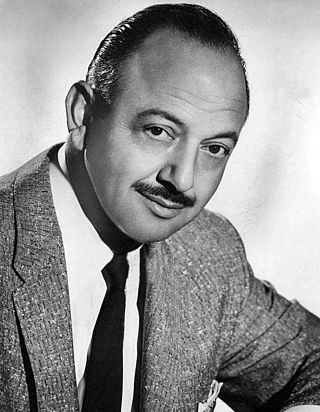
Melvin Jerome Blanc was an American voice actor and radio personality whose career spanned over 60 years. During the Golden Age of Radio, he provided character voices and vocal sound effects for comedy radio programs, including those of Jack Benny, Abbott and Costello, Burns and Allen, The Great Gildersleeve, Judy Canova, and his own short-lived sitcom.

Looney Tunes is an American animated franchise produced and distributed by Warner Bros. It began as a series of short films that originally ran from 1930 to 1969, concurrently with its partner series Merrie Melodies, during the golden age of American animation. Following a revival in the late 1970s, new shorts were released as recently as 2014. The two series introduced a large cast of characters, including Bugs Bunny, Daffy Duck, and Porky Pig. The term Looney Tunes has since been expanded to also refer to the characters themselves.

Speedy Gonzales is an animated cartoon character in the Warner Bros. Looney Tunes and Merrie Melodies series of cartoons. He is portrayed as "The Fastest Mouse in all Mexico" with his major traits being the ability to run extremely fast, being quick-witted and heroic while speaking with an exaggerated Mexican accent. He usually wears a yellow sombrero, white shirt and trousers, and a red kerchief, similar to that of some traditional Mexican attires. To date, there have been 46 theatrical shorts made either starring or featuring the character.
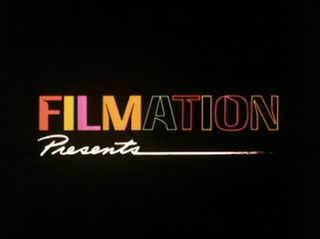
Filmation Associates was an American production company that produced animation and live-action programming for television from 1963 until 1989. Located in Reseda, California, the animation studio was founded in 1962. Filmation's founders and principal producers were Lou Scheimer, Hal Sutherland and Norm Prescott.

Leon Schlesinger was an American film producer who founded Leon Schlesinger Productions, which later became the Warner Bros. Cartoons studio, during the Golden Age of American animation. He was a distant relative of the Warner Brothers. As head of his own studio, Schlesinger served as the producer of Warner's Looney Tunes and Merrie Melodies cartoons from 1930, when Schlesinger assumed production from his subcontractors, Harman and Ising, to 1944, when Warner acquired the studio.

Golden Yeggs is a 1950 Warner Bros. Merrie Melodies short directed by Friz Freleng. The cartoon was released on August 5, 1950, and stars Daffy Duck and Porky Pig. A forerunner of the Rocky and Mugsy characters appear, with Rocky already in his present-day form.

Petunia Pig is an animated cartoon character in the Looney Tunes and Merrie Melodies series of cartoons from Warner Bros. She looks much like her significant other, Porky Pig, except that she wears a dress and has pigtailed black hair.

Groovie Goolies is an American animated television show that had its original run Saturday mornings on CBS between 1970 and 1972. It was rebroadcast the following season on Sunday mornings. Set at a decrepit castle, the show focused on its monstrous but good-natured and mostly friendly inhabitants. Created by Filmation, Groovie Goolies was an original creation of the studio; its characters would cross over with Filmation's Archie Comics adaptations including Sabrina the Teenage Witch and The Archie Show, as well as with the Looney Tunes cast.
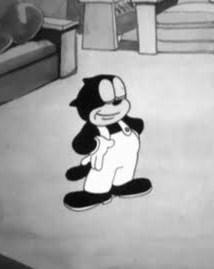
Beans the Cat is an animated cartoon character in the Warner Bros. Cartoons series of cartoons from 1935–1936. Beans was the third Warner Bros cartoon character star after Bosko and Buddy. He was voiced by Billy Bletcher. He was created by director Friz Freleng. The character was featured in nine cartoons made in 1935 and 1936.
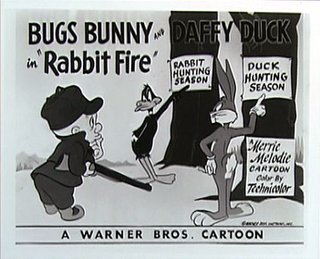
Rabbit Fire is a 1951 Looney Tunes cartoon starring Bugs Bunny, Daffy Duck, and Elmer Fudd. Directed by Chuck Jones and written by Michael Maltese, the cartoon is the first in Jones' "hunting trilogy"—the other two cartoons following it being Rabbit Seasoning and Duck! Rabbit, Duck! It is also the first cartoon to feature a feud between Bugs and Daffy. Produced by Edward Selzer for Warner Bros. Cartoons, Inc., the short was released to theaters on May 19, 1951 by Warner Bros. Pictures and is often considered among Jones' best and most important films.

Drip-Along Daffy is a 1951 Warner Bros. Merrie Melodies theatrical cartoon short, directed by Chuck Jones and written by Michael Maltese. The cartoon was released on November 17, 1951, and stars Daffy Duck and Porky Pig.

Bah, Humduck! A Looney Tunes Christmas is a 2006 animated direct-to-DVD Christmas comedy film starring the Looney Tunes characters, directed by Charles Visser, produced by Warner Bros. Animation and animated by Toon City Animation. The film is based on Charles Dickens' classic novella A Christmas Carol (1843). The special was released on DVD on November 14, 2006, and was then broadcast on Cartoon Network in December 2006. The special was rereleased on DVD as part of the Looney Tunes Holiday Triple Feature on September 1, 2020.
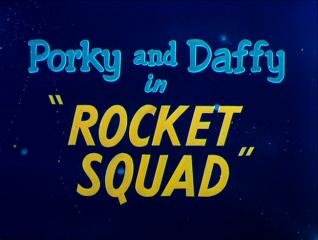
Rocket Squad is a 1956 Warner Bros. Merrie Melodies cartoon directed by Chuck Jones. The short was released on March 10, 1956, and stars Daffy Duck and Porky Pig as futuristic space cops who patrol the Milky Way Galaxy. The police officers of the film are sued for false arrest, and the film ends with their imprisonment.
This is a list of all cartoons featuring Porky Pig. Directors are listed in parentheses.

Sabrina the Teenage Witch is an American animated television series produced by Filmation that aired on CBS during Saturday mornings from 1970 to 1974. The series has also aired in prime time as a syndicated series.
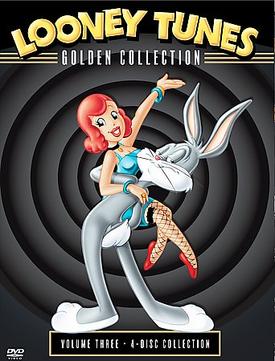
Looney Tunes Golden Collection: Volume 3 is a DVD box set from Warner Home Video that was released on October 25, 2005. It contains 60 Looney Tunes and Merrie Melodies theatrical short subject cartoons, nine documentaries, 32 commentary tracks from animators and historians, 11 "vintage treasures from the vault", and 11 music-only or music-and-sound-effects audio tracks.

Manuel "Manny" Perez was an American animator and animation director whose career spanned 40 years, from the 1940s to the 1980s, and best known for his work on the Warner Bros. Cartoons animated shorts, working on such cartoons as Bugs Bunny, Elmer Fudd and Daffy Duck. Later in his career he worked on Fritz the Cat and The Lord of the Rings.

Looney Tunes Cartoons is an American animated television series developed by Pete Browngardt and produced by Warner Bros. Animation, based on the characters from Looney Tunes and Merrie Melodies. The series made its worldwide debut at the Annecy International Animation Film Festival on June 10, 2019, and premiered on HBO Max on May 27, 2020.
References
- ↑ Erickson, Hal (2005). Television Cartoon Shows: An Illustrated Encyclopedia, 1949 Through 2003 (2nd ed.). McFarland & Co. p. 55. ISBN 978-1476665993.
- ↑ Lehman, Christopher P. (2014). American Animated Cartoons of the Vietnam Era: A Study of Social Commentary in Films and Television Programs, 1961-1973. McFarland & Co. p. 172. ISBN 9780786451425.
- ↑ "Animator, Warner Bros. teams up for TV, movies" (PDF). Broadcasting Magazine . 1971-02-01. p. 51.
- ↑ Scheimer, Lou; Mangels, Andy (December 15, 2012). Creating The Filmation Generation. TwoMorrows. ISBN 9781605490441 . Retrieved 21 November 2023.
We also made a deal with Warner Bros., to produce animated films for them.
- ↑ Scheimer, Lou; Mangels, Andy (December 15, 2012). Creating The Filmation Generation. TwoMorrows. ISBN 9781605490441 . Retrieved 21 November 2023.
On February 1, 1971, more information came out about our deal with Warner. The agreement was that we would create animated films based on existing WB film and TV characters, titles, and properties, which would then be distributed exclusively off-network on a global basis. We were also supposed to animate feature films for Warner. Said projects would be sold around the world by Licensing Corp. of America (which was licensing Warner and National-DC properties at the time), although CMA remained our agent. Although WB TV head Gerald J. Leider announced the deal, our contact at Warner was Jacqueline Smith. This deal led to a very strange collaboration in 1972, and a few other interesting projects, before changing into something else entirely.
- ↑ Scheimer, Lou; Mangels, Andy (December 15, 2012). Creating The Filmation Generation. TwoMorrows. ISBN 9781605490441 . Retrieved 21 November 2023.
In early November the trades reported that one of our co-ventures with Warner was going to be an ABC series of the Road Runner. Let's just say that plans for that went the way of most of Wile E. Coyote's plans... but it didn't mean our deal with Warner wasn't about to take some interesting turns.
- ↑ Scheimer, Lou; Mangels, Andy (December 15, 2012). Creating The Filmation Generation. TwoMorrows. ISBN 9781605490441 . Retrieved 21 November 2023.
In mid-January 1972, Warner announced an expansion on their agreement with us from the previous year, with ten feature animated films—each budgeted at $1 million and set at 90-minutes—announced as a co-production. The three-year project was noted in trades as being the largest deal of its kind in animation history. The tagline for the series of films was "Family Classics", and Warner held network and syndication rights. Titles announced were: Oliver Twist, Cyrano De Bergerac, Swiss Family Robinson, Don Quixote, From the Earth to the Moon, Robin Hood, Noah's Ark, Knights of the Round Table, Arabian Nights, and Jack London's Call of the Wild. All of the works were based on books or concepts in the public domain, but not animated by any other studio. Warner was owned at that point by Kinney Services, a cable TV company, and with us owned by TelePrompTer the cable market—and the eventual home video market—was being closely eyed for these films as a continual revenue stream, not unlike Disney's features. For us it meant we could employ an animation team of 400 people year-round!
- ↑ Scheimer, Lou; Mangels, Andy (December 15, 2012). Creating The Filmation Generation. TwoMorrows. ISBN 9781605490441 . Retrieved 21 November 2023.
That was the weirdest project for us and really sprang out of that deal we had with Warner Bros. We had the rights to use some of their characters, so we did this special in which the Groovie Goolies came out to Hollywood and wanted to meet the Warner Bros. characters. We used a lot of the main Warner characters, except Bugs Bunny and the little mouse guy, Speedy Gonzales. And I think it's one of the few times we used that wonderful voice actor, Mel Blanc, although he may have been ill then. He had a terrible accident, and that may be the time his son did some stuff for us, imitating his dad. The villain of the story was "Claude Chaney", which was our little nod to Lon Chaney and Claude Rains. Overall, it was really a strange project.
- ↑ Scheimer, Lou; Mangels, Andy (December 15, 2012). Creating The Filmation Generation. TwoMorrows. ISBN 9781605490441 . Retrieved 21 November 2023.
There was a live-action segment in this special with the Goolies as well, in which they went through "Mad Mirror Land" into the real world, chasing after the disguised Phantom of the Flickers. We filmed it in a kind of stop-motion called "pixelation", so they had kind of a cartoon feel. That even enabled us to have Drac appear to fly by flapping his cape without using wires to hold him up. It was filmed in Westlake Village near Thousand Oaks. The four guys who portrayed the live-action monsters were: Michael Richard Monda, a.k.a. "Daddy Dewdrop" (Drac); songwriter Jeffrey Thomas (Wolfie); musician Emory Lee Gordy, Jr. (Hauntleroy); and music producer Ed Fournier (Frankie). They did a great job portraying their animated counterparts, and, if we had pursued any live Goolies show, they would have been a lock for it.
- ↑ Cash Box staff (July 1970). "Filmation Sets 'Goolies'; New TV Musicomedy". Cash Box. No. 31. Cash Box Pub. Co. p. 257. Retrieved November 22, 2023.
- ↑ Scheimer, Lou; Mangels, Andy (December 15, 2012). Creating The Filmation Generation. TwoMorrows. ISBN 9781605490441 . Retrieved 21 November 2023.
We had completed work on Oliver Twist, and I think even on Treasure Island from our deals with Warner. And then Warner changed their mind and decided to drop the "animated classics" line. I think they did one test screening for Oliver Twist, which didn't go well, and they just dropped it all. And we were then out $50,000 per picture because we put in more than they gave us to do them.
- ↑ Schneider, Steve (1988). That's All, Folks! : The Art of Warner Bros. Animation. Henry Holt and Co. pp. 132–133. ISBN 0-8050-0889-6.
- ↑ "Cartoon Research FAQ-2". Archived from the original on March 28, 2002. Retrieved November 23, 2023.
- ↑ "What TV Cartoons Should Be Forgotten?". cartoonresearch.com. Retrieved November 23, 2023.
- ↑ "Groovie Goolies". 2006-09-15. Archived from the original on 2006-09-15. Retrieved 2020-05-20.
- ↑ Russ - #Retro, Russty (2017-07-04). "TV25: Here's what was on TV on this day 25 years ago (Saturday) 04 July 1992. Any favourites here? @transdiffusionpic.twitter.com/RQ9Lt3bwPj". @russty_russ. Retrieved 2020-05-20.
- ↑ "Archie (Filmation) questions". Home Theater Forum. Retrieved May 6, 2019.
- ↑ "Notable Hanna-Barbera voice-over artists, who've also done work at rival Filmation". Anime Superhero News. Retrieved June 16, 2019.
- ↑ KG, imfernsehen GmbH & Co, Monsterparty auf Schloß Blutenburg Folge 1: Daffy Duck und das Phantom der Seifenoper – Teil 1 (in German), retrieved 2020-05-20